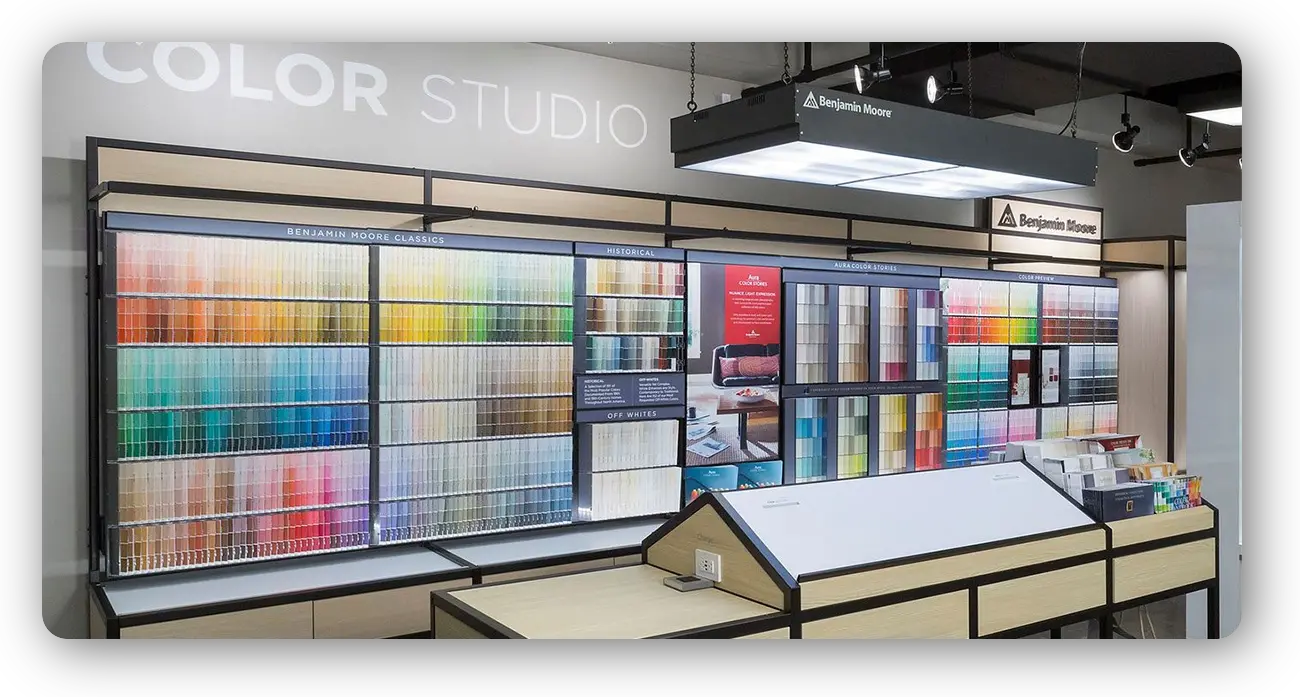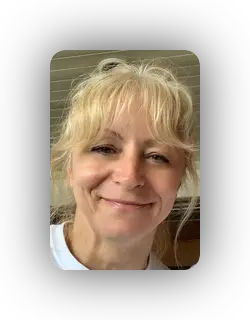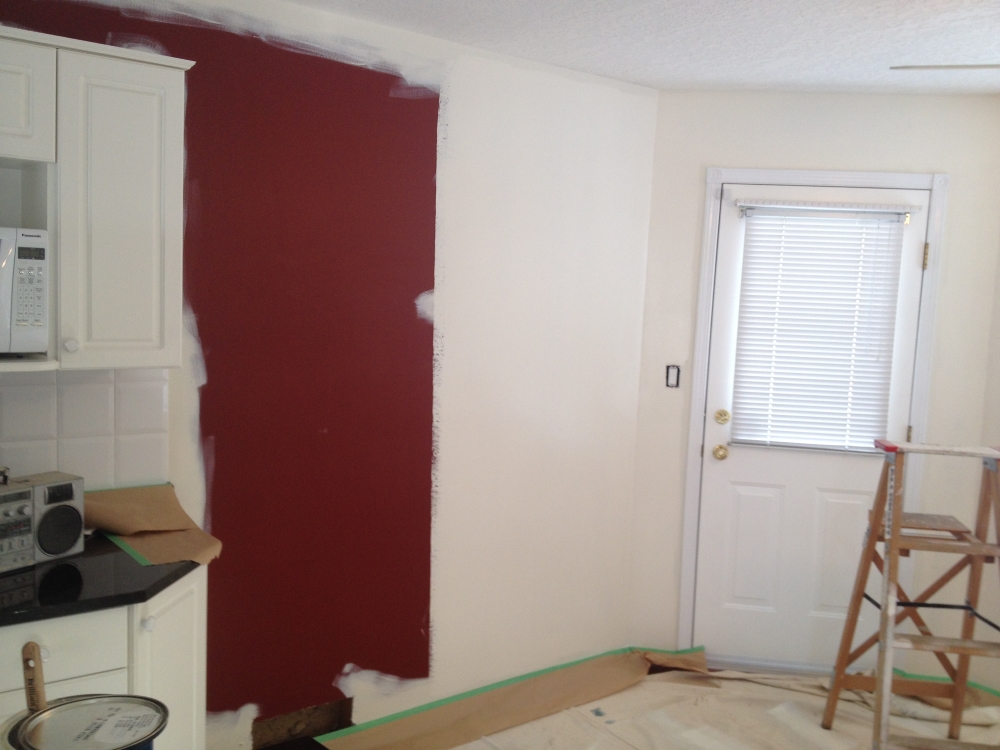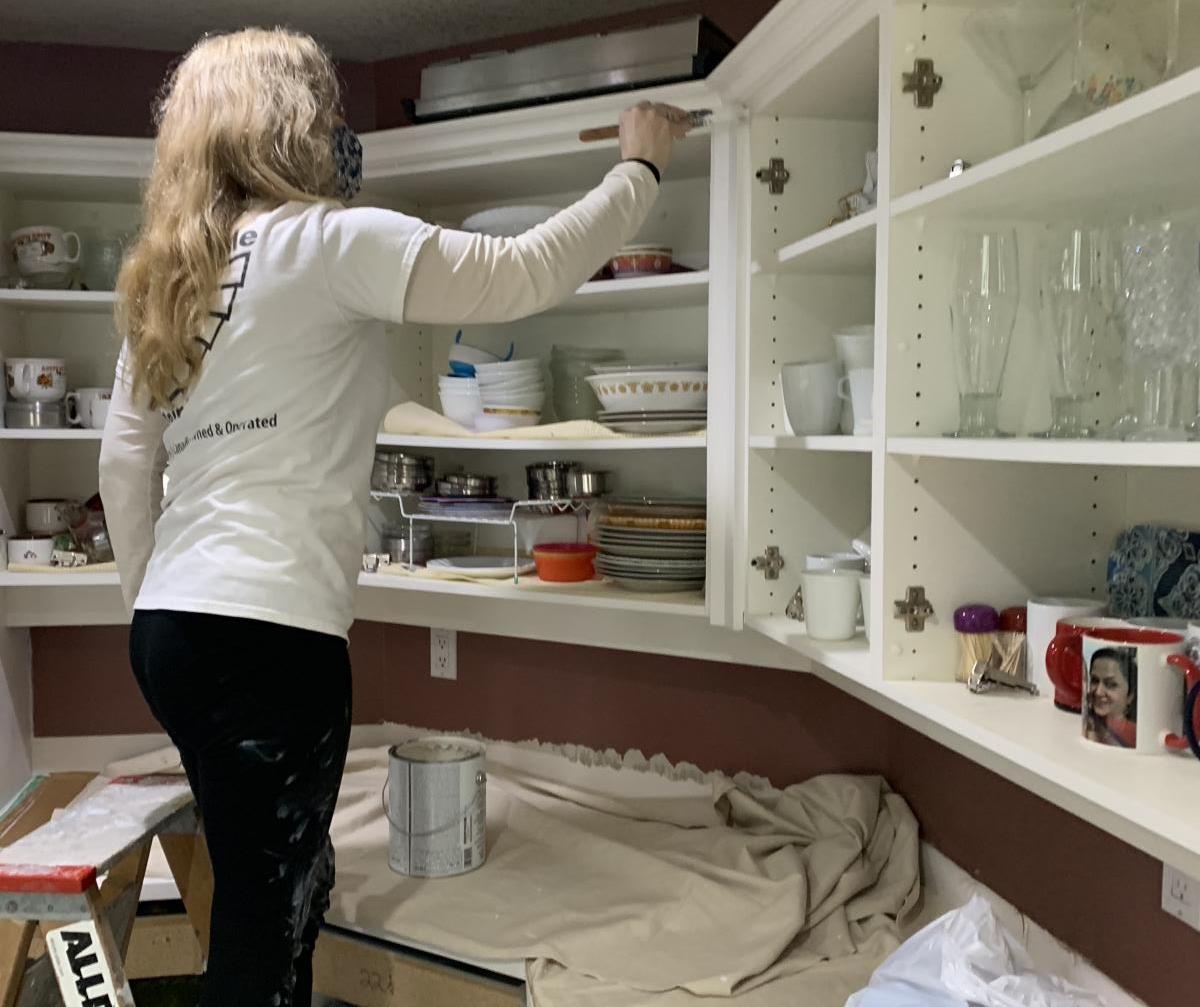Cabinet Painting FAQ's
Frequently asked questions
What paint brand do we prefer?
We choose Benjamin Moore Aura low VOC paint
What's In Paint?
Paint is a simple mixture of ingredients including pigments, a binder and a diluent, or thinner (in latex paint it is water; in solvent paints, it is a petroleum solvent).

Pigments
Pigments provide the texture, color, and hiding properties of paint, not unlike the mud, blood, and chalk used centuries ago. They usually take the form of a dry powder, and can be made from either synthetic or natural materials. Today, architectural coatings are formulated to be as safe as possible by ensuring that pigments are carefully screened and selected.
Titanium dioxide is the primary pigment ingredient that provides hiding in light color paints. While any powder can pose a health hazard if inhaled in high concentrations, titanium dioxide(which is used also in cosmetics, soaps and certain food products) cannot be inhaled when used in a paint film and poses no risk to the user.
Other pigments commonly used in paint—including calcium carbonate, talc, clay, and sand—are naturally occurring materials that contribute various properties like gloss control, flow, and film build. Iron oxides are inorganic color pigments, chemically akin to rust on metal, and are used to produce reds and yellows.
Binders
The binder portion of an architectural coating consists of both synthetic and natural resins that start out as liquids but dry to form tough durable films.
The properties of the binder largely determine the properties of the paint film. In waterborne coatings, the binder is usually a latex emulsion composed of vinyl or acrylic copolymers. In solvent-borne coatings, the binder is usually an alkyd, a natural drying oil modified chemically to be especially tough and long lasting.
Diluents
Latex emulsion paints are thinned with water and represent the ultimate in safety and ease of use. Solvent-based or oil paints are thinned with petroleum solvent which make them less convenient and require more care to be used safely.
Over the years, use of solvent-borne paint has diminished because of concern over volatile organic compounds (VOCs). However, solvent-borne paints still play an important role today because of their unique durability and adhesion properties.
Additives
Additional ingredients called additives give paints a variety of properties such as flow, stability, drying, de-foaming, mildew resistance and viscosity.
Coalescents
Also called film-forming aids, coalescents are solvents used in waterborne coatings that help fuse, or coalesce, latex particles in latex emulsion paints during the drying process. They make better paint films possible by permitting the use of harder resins in the coatings formulation. These harder resins result in interior paints that are scrub-resistant and durable.
Anti-Skinning Agents
Used only in solvent-borne coatings, anti-skinning agents prevent undesirable surface drying, or skinning, in the container during storage and shipment.
Pigment Suspending Aids
Pigment suspending aids are dispersants and surfactants that are present in most paints in very small quantities and help impart stability and promote shelf-life.
Viscosity and Flow Enhancers
These provide superior application properties and help achieve the best possible hiding and film appearance.
For additional information about Benjamin Moore paints, visit your local Benjamin Moore retailer where you can find a knowledgeable partner for all your painting needs.
What paint do we use
We choose Benjamin Moore paint so you have over 3500 colours to choose from!
If you want a custom colour we can colour match that as well!

Do you work alone or with a crew?
Chris and Rose work together

Rose has been in the painting and hardware industry since 1995

Chris has been refinishing cabinets since 1975
Does Paint Chip?
Kitchen cabinet paint is no different from any other type of paint. Paint will chip if you hit it.
We use Benjamin Moore Acrylic paint on all kitchen cabinets and we always leave some extra touch-up paint for our clients. Should the unfortunate ever happen, a little dab of paint on a Q-Tip may be all you need to do.
Painting extreme colour change
Check out how great 1 coat of Benjamin Moore Aura covers over this red paint. Two coats is just beautiful. No primer needed.

Costs and why?

Costs are based on:
- How many doors and drawers do you have.
- Condition of wood
- Type of wood
- Door profile
- If any painting is required inside cabinet boxes (examples: behind glass doors, microwave box etc)
- Glass doors
- Open shelving
- Types of hinges
- Overall condition of the entire kitchen cabinets
The average cost to refinish kitchen cabinets is somewhere between $3500 and $6500.
Our clients consistently agree that when comparing all other options, having us paint their cabinets was the best choice.
See our (testimonials)
Changing countertops before or after
Should you wait to have counter tops installed first or after painting?
The order this only matter if a counter-top is pushed up against a panel that therefore would have no choice but to scrape newly painted panels during the install.
However, you generally paint cabinets before you install new counter-tops as this is usually how it goes with new cabinet installs. Painting them first is standard procedure.
Being said... we paint cabinets before or after and if by chance something may happen, touching up is as easy as a call away.
Hand painting vs spray painting
Spraying cupboards in homes is the fast and cheap way to do kitchen cabinet refinishing. We never spray cabinets in homes for a variety of reasons:
Cons:
- Spraying taped off boxes with plastic around everything creates a cheaper look.
- Over-spray settling on adjacent sections is problematic to high end cabinet finishing.
- Spraying 45 degree angles often creates uneven paint build up and thin sections that you don't want.
- Crown mouldings, valances and seams of boxes don't look good with open seams. Spraying open seams never fill properly which end up cracking down the road. We know people spray cabinets in homes but its not how we do it.
Pros
- Hand finishing is the big difference to why our cabinet refinishing looks so beautiful and seamless. We are successful cabinet painters because we are excellent hand and spray painters. If an area cannot or should not be disassembled, we hand paint those to match. Our clients constantly tell us how happy they are with the new look of their kitchen cabinets. This is greatly due to our detail in prep work, hand painting and caulking seams prior to top coats.
NOTE: Some areas of this kitchen below are hand painted. You cannot tell the difference.
When it comes to the finishing touches, there are always sections beyond spraying that require detailed hand painting to match spray finishing. The art to making a kitchen look amazing is all in the hand finishing and sealing of joints, cracks and seams.
Hand Painting
Crown mouldings, face frames, edging, side panels, gable ends, valances, shelving, inside microwave boxes, around built-in (overs, dishwashers and refrigerators), kick plates, behind fridges plus anything with a crack requires caulking and hand finishing.
Hand finishing is the big difference to why our work looks so beautiful. We are successful cabinet painters because we are excellent hand finishers.
